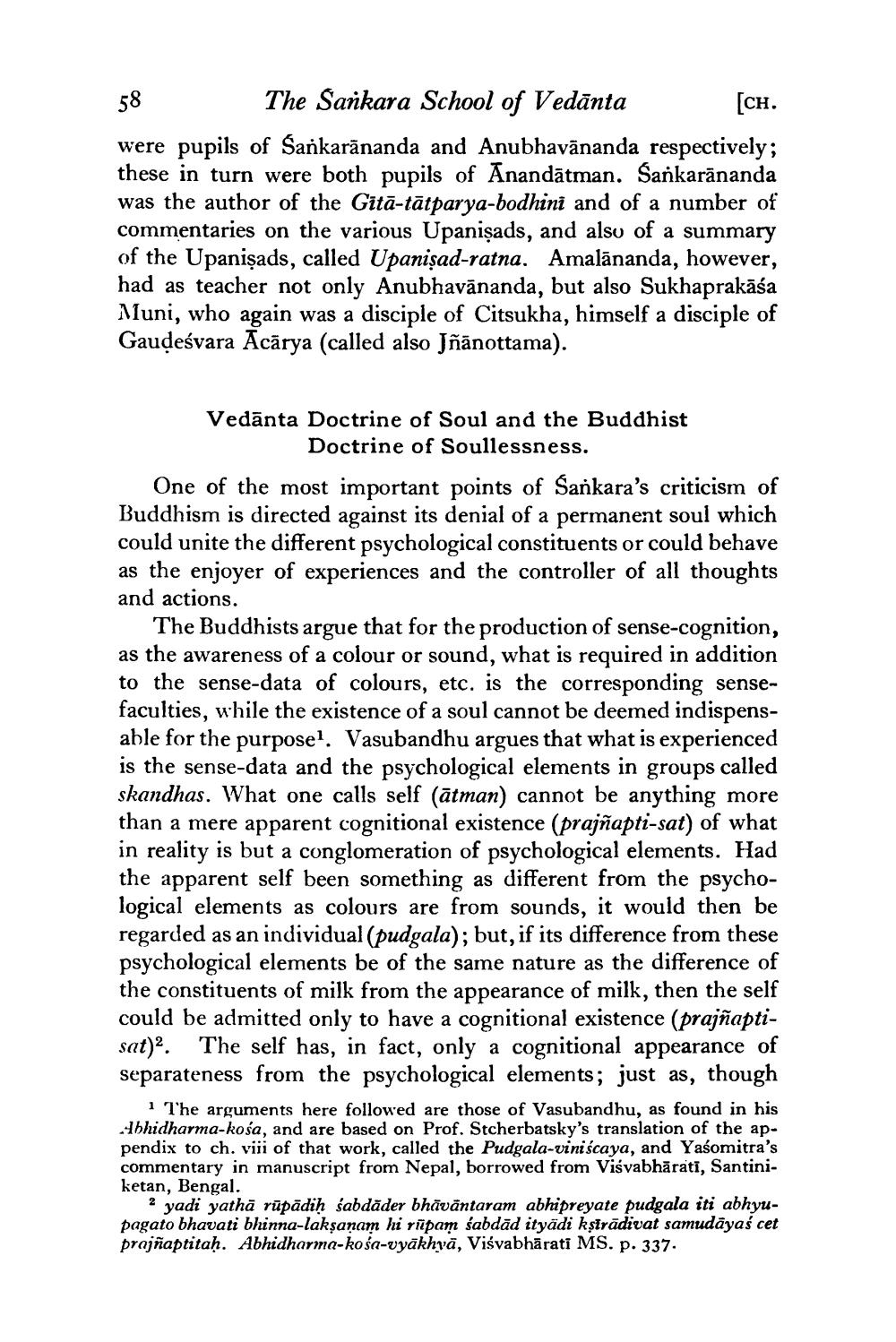________________
58
The Sankara School of Vedānta [CH. were pupils of Sankarānanda and Anubhavānanda respectively; these in turn were both pupils of Anandātman. Sankarānanda was the author of the Gitā-tātparya-bodhini and of a number of commentaries on the various Upanişads, and also of a summary of the Upanişads, called Upanişad-ratna. Amalānanda, however, had as teacher not only Anubhavānanda, but also Sukhaprakāśa Muni, who again was a disciple of Citsukha, himself a disciple of Gaudeśvara Ācārya (called also Jñānottama).
Vedānta Doctrine of Soul and the Buddhist
Doctrine of Soullessness. One of the most important points of Sankara's criticism of Buddhism is directed against its denial of a permanent soul which could unite the different psychological constituents or could behave as the enjoyer of experiences and the controller of all thoughts and actions.
The Buddhists argue that for the production of sense-cognition, as the awareness of a colour or sound, what is required in addition to the sense-data of colours, etc. is the corresponding sensefaculties, while the existence of a soul cannot be deemed indispensable for the purpose? Vasubandhu argues that what is experienced is the sense-data and the psychological elements in groups called skandhas. What one calls self (ātman) cannot be anything more than a mere apparent cognitional existence (prajñapti-sat) of what in reality is but a conglomeration of psychological elements. Had the apparent self been something as different from the psychological elements as colours are from sounds, it would then be regarded as an individual (pudgala); but, if its difference from these psychological elements be of the same nature as the difference of the constituents of milk from the appearance of milk, then the self could be admitted only to have a cognitional existence (prajñaptisat)2. The self has, in fact, only a cognitional appearance of separateness from the psychological elements; just as, though
The arguments here followed are those of Vasubandhu, as found in his Abhidharma-kośa, and are based on Prof. Stcherbatsky's translation of the appendix to ch. viji of that work, called the Pudgala-viniscaya, and Yasomitra's commentary in manuscript from Nepal, borrowed from Visvabhārati, Santiniketan, Bengal.
2 yadi yathā rūpādih sabdăder bhāvāntaram abhipreyate pudgala iti abhyupagato bhavati bhinna-laksanam hi rūpam sabdād ityādi kşirādivat samudāyaś cet prajñaptitaḥ. Abhidharma-kośa-vyākhyā, Visvabhārati MS. p. 337.




